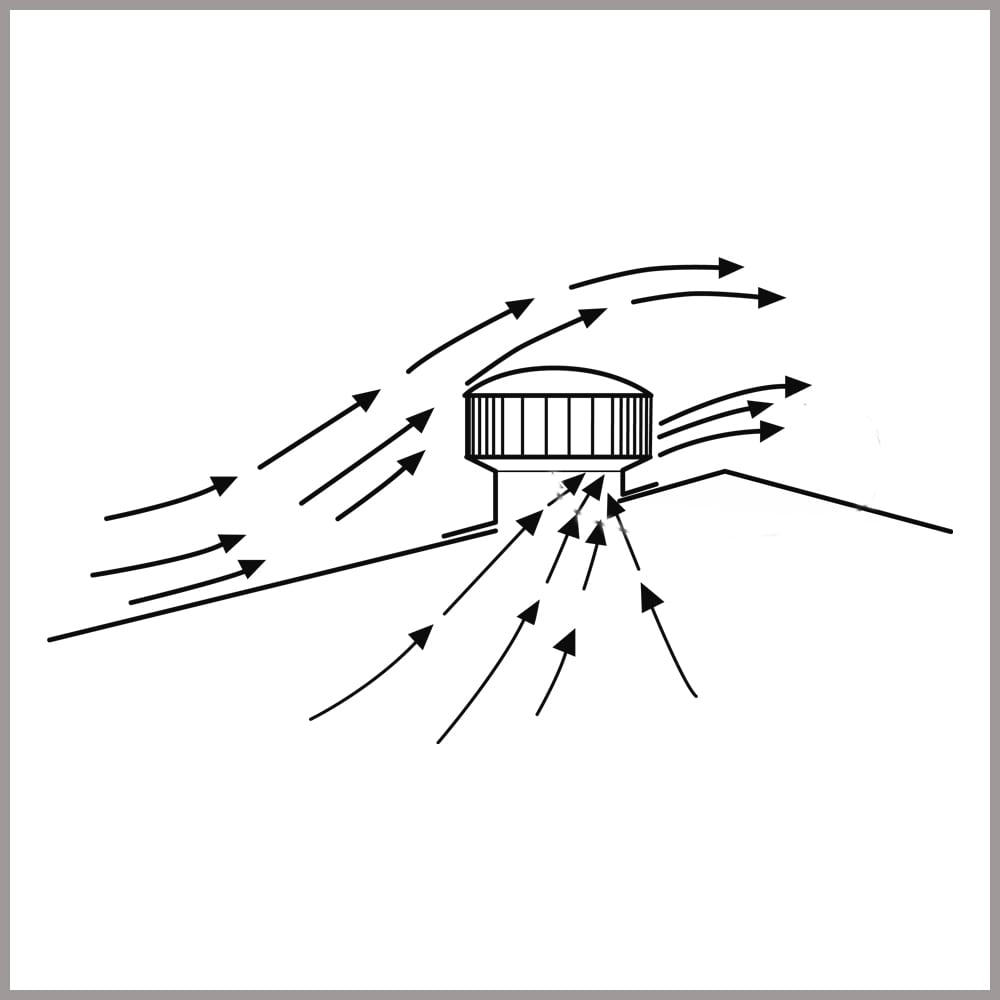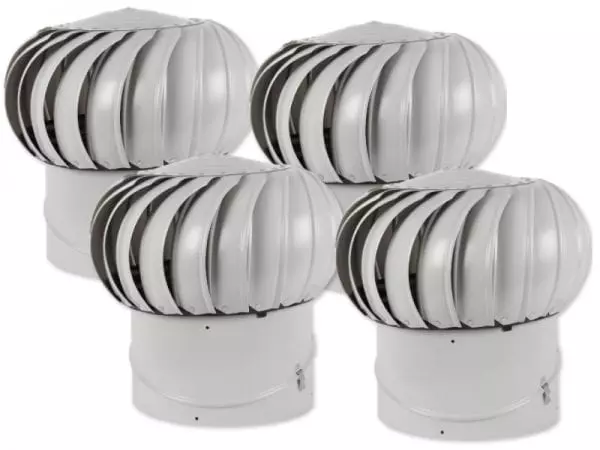Why is Roof Ventilation Important in Summer and Winter?
Rain Heads Custom Made Shipped Free Australia Wide – Click Here >
Dambuster Rain Heads Shipped Free Australia Wide – Click Here >
Commercial Industrial Roof Vents 300mm-950mm – Click Here >
Eco-Friendly Roofing Insulation Shipped Free – Click Here >
Gutter Sumps Shipped Free Australia Wide – Click Here >

Year Round Benefits of Vents
Roof ventilation plays very important—though very different—roles in summer and winter; however, the basic function remains the same. Roof ventilation works to balance out the temperature between the hot inside spaces of attics and other high areas of a property with the cooler outside air, as well as keep that internal air moving. Keeping the air moving through an attic prevents a buildup of moist, warm air, which in turn can foster mould and mildew growth. The temperature balance aspect of roof ventilation serves an important role in its own right, especially in areas that get significant snowfall and below-zero temperatures. Read on, and we’ll take a deeper dive into how these functions work.

Air Movement
The primary function of roof ventilation is to keep the air in those higher spaces of a building moving. This is usually achieved by way of passive vents lower in the property, such as the soffit vents, and active vents higher up, such as roof turbine vents. The higher vents will pull the air inside the property up and out through the roof, while the lower vents will allow cooler air in to replace it. There are many different ways to achieve this effect, but the basic premise of all forms of roof ventilation remains to keep that air moving.
Moisture
One of the more significant problems with a lack of airflow in a property is moisture. Moisture can come from environmental factors like a humid local climate, or it can come from human-made factors, such as boiling water, or human breath. Regardless of how it gets there, that moisture, if left to float around in the air for long periods, will eventually find its way onto surfaces and into the materials of the house. When that happens, it can cause the degradation of the construction materials used in the property, and allow things like mould and damp to fester.
One of the most common places for moisture to begin this kind of destructive journey is at the roof. Warm air rises, and as it does, it will take any moisture with it. As the warm air reaches the roof, it encounters the inner surface of it, which is kept cool by the outside air. This drop in temperature causes the moisture to condense into liquid water, where it can cause any number of problems for the property.
Cooling
It is a common misconception that rood ventilation is a way of cooling a building in the same sense that air conditioning is, but this is not the case. A building that is in use will tend to get warmer than the ambient temperature outside whether it is from heating, the capturing of heat from sunlight, or even just the body height of the people inside.
Roof ventilation works to bring this increased temperature down to the level of the ambient temperature outside, but it cannot take it lower than that. This is because the cooling effect is generated by moving the warmer internal air outside, and bringing in the cooler outside air to replace it. To get lower than the external temperature, you would need real air conditioning. >

Winter Problems
The equalising of internal and external temperatures are perhaps most useful in winter, or any time when there is snowfall settling on the roof. When a roof is not properly ventilated, it becomes warm, particularly around the middle peak. This warmth can get sufficiently high to melt the snow that is settled at the top of the roof, causing the melt to run down the sides of the roof.
The lower regions of the roof, however, are not as warm as the peak, and the water can sometimes refreeze before it runs off the roof entirely. This creates what is known as an ice dam. This dam builds up as more snowmelt runs down the roof until, eventually, water starts to back up behind it.
A typical roof is designed to prevent rain from getting into the property, but it is not intended to keep water out that is coming from below, which is precisely what happens when this water backs up. The rising water seeps under the shingles and into the property.
A properly ventilated roof will maintain an even temperature that is much closer that of the outside air. That balanced temperature prevents snow from being melted by the internal heat of the property.
Water Damage
We’ve talked about how a lack of roof ventilation can allow water to either form or get into the property, but what damage can it do once it is there? The obvious problems are mould and mildew. Combined with warmer air that will be there if the roof is not ventilated, that moisture makes it easy for mould to grow. What’s worse is that mould can degrade the wood structure of your roof, which is obviously not desirable.
Another problem it can create is an increase in heating bills by ruining your insulation. Most attics have insulation to keep the heat of the property from escaping through the roof too easily, but insulation does not take kindly to water. In the case of cellulose insulation, it all but destroys it. While fibreglass insulation may be salvageable, the effort it would take to dry the insulation out can often make it more practical to just replace it entirely.
In the meantime, insulation that has become damp loses much of its insulative properties, meaning more heat will get through to the attic, which means the whole process that allowed water into the attic, to begin with, will be sped up.
Summing Up
The primary function of roof ventilation is to keep the air in the upper areas of a building cool and moving. However, there are several effects that stem from this function, and all of them are beneficial to your home or commercial building.
Roof ventilation should be seen as an essential feature in any building and in particular one with a closed-off attic space with additional insulation, or one that receives snowfall from time to time.

Supply & Installation Price
Sydney Metro Only

Supply & Installation Price
Sydney Metro Only
3 Roof Vent
Supply & Installation Price
$1,090/3

3 Ampelite 300 Spinaway
Colorbond or Mill Finish Supply & Installation Price
Download PDF
4 Roof Vent
Supply & Installation Price
$1,300/4

4 Ampelite 300 Spinaway
Colorbond or Mill Finish Supply & Installation Price
